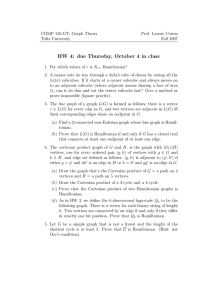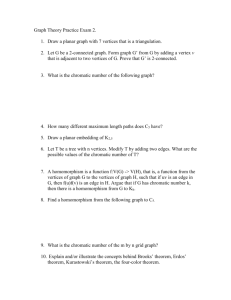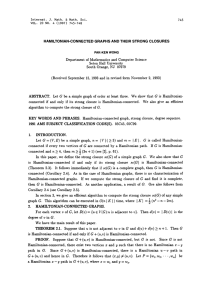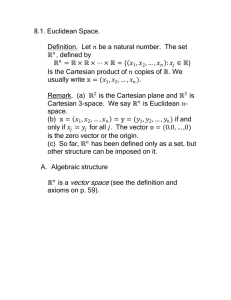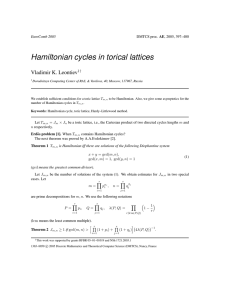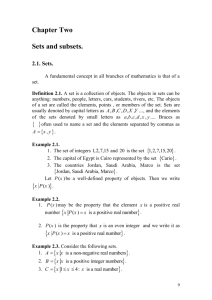Hamiltonian properties in Cartesian product
advertisement
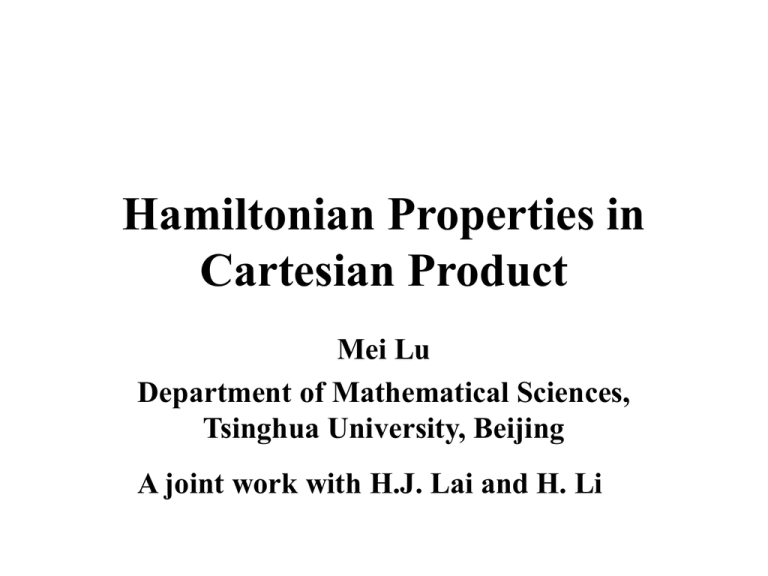
Hamiltonian Properties in Cartesian Product Mei Lu Department of Mathematical Sciences, Tsinghua University, Beijing A joint work with H.J. Lai and H. Li Terminology and notation Let G=(V, E) be a simple graph. dG(v): the degree of v in G. Δ(G): the maximum degree of G Pm: a path with m vertices (m≥2) Cn: a cycle with n vertices (n≥3) K1,j-1:a star with j vertices (j≥1) Cartesian product of G1 and G2 Problem In 1978, W. T. Trotter, Jr. and P. Erdos [J. Graph Theory 2 (1978), no. 2, 137–142;] gave necessary and sufficient conditions for the Cartesian product Cn×Cm of two directed cycles to be Hamiltonian. Namely, Cn×Cm is Hamiltonian if and only if there exist positive integers d1 and d2 such that gcd(d1, n) = 1 = gcd(d2,m) and d = d1 +d2 where d = gcd(m, n). Some known results V.V. Dimakopoulos, L. Palios, A.S. Poulakidas, On the hamiltonicity of the cartesian product, Information Processing Letters 96 (2005) 49–53. Results (1) Theorem 1 Corollary 2 V. Batagelj and T. Pisanski, Hamiltonian cycles in the Cartesian product of a tree and a cycle, Discrete Math. 38 (1982), no. 2-3, 311– 312. Lemma Theorem 1 Sketch of the proof Results (2) Theorem 3 Results (3) Theorem 4 Lemma Results (4) Theorem 5 Results (5) Theorem 6 Thank You!
